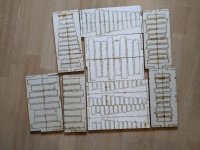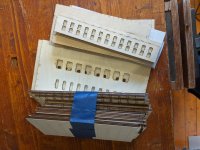Ryan C.
Newbie
Hello
I am a intermediate to advanced Irish Button Accordion player, and am trying to get into building accordions
I fully understand how to wax and tune the reeds separately, but I don't have the slightest idea of how I should go about constructing the reed blocks themselves.
I was thinking of making a one row melodeon with four voices (two trebles, a bassoon and a piccolo), out of either the BlueStar or A Mano Voci Armoniche reeds
If you have any resources/ can teach me how to build reeds blocks, that would be more than amazing.
Thanks,
Ryan C.
I am a intermediate to advanced Irish Button Accordion player, and am trying to get into building accordions
I fully understand how to wax and tune the reeds separately, but I don't have the slightest idea of how I should go about constructing the reed blocks themselves.
I was thinking of making a one row melodeon with four voices (two trebles, a bassoon and a piccolo), out of either the BlueStar or A Mano Voci Armoniche reeds
If you have any resources/ can teach me how to build reeds blocks, that would be more than amazing.
Thanks,
Ryan C.


